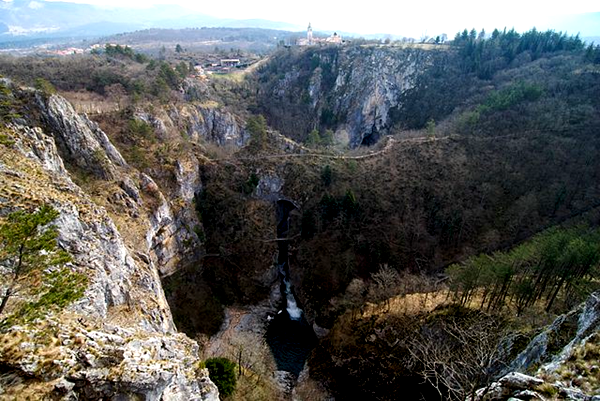Different tools were used to measure lines and angles at different times. The most common of these are the plumb, water level, compasses and protractor. Not for nothing did some of them become symbols of Freemasons - "free masons".These tools are easy to use and in skillful hands are quite accurate. But for use in modern construction only they are not enough. The error that they allow in the measurements is too great, and to build with their help a skyscraper or even to mount the frame of a prefabricated hangar is very difficult. They are replaced by more modern tools that use laser beams and sophisticated optical and electronic systems. We will tell you how to choose a laser level for a different kind of work.
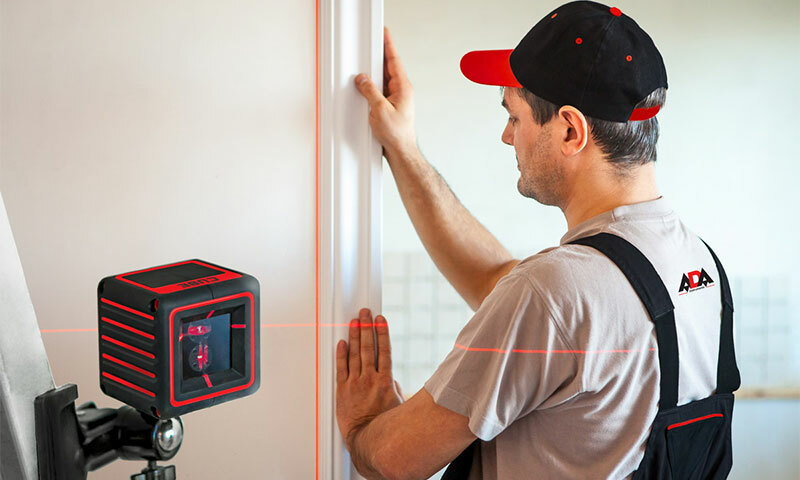
Contents:
- Features and design of the laser level
- The main types of laser levels - what they are
- Rating of models for professional and household use
- How to be guided when choosing a laser level
- Video: how to choose a laser level
Features of design and operation of the laser level
Laserthe building level( this device is also called the laser level) of any model can be divided into several interacting systems:
- light emitters;
- optical focusing system;
- mechanism for maintaining equilibrium;
- power supply;
- control unit.
Often you have to hear the question - how does the level differ from the laser level. The answer is simple - the laser level is not anything different. It's the same device. The optical level is a completely different device.
Light Emitter
As light sources, powerful light-emitting diodes are used, under the influence of an electric field, generating monochromatic light. Monochromatic - light with a certain wavelength, usually corresponding to one of the colors of the spectrum.
In household and professional lasers, beams of two colors are used - red or green, corresponding to a length of 635 and 532 nanometers. In this case, the red color has a slightly yellowish tint, almost invisible to the eye. These colors are best seen indoors and outdoors. The green beam is brighter and easy to work with in daylight, but the red is clearly visible up to 40 meters away, and with a special receiver it can be seen for more than 100 meters.
LEDs are chosen not only because they are the only sourcesmonochromatic light of high power. The reason is that they do not heat up at all, they consume a minimum of energy, do not collapse under random impacts and do not reduce the intensity of radiation and the accuracy of the wavelength with time.
Optical systems
Optics of the laser level is a system of lenses, focusing an already thin beam into one point. In this case, the thickness of the beam at a distance of several tens of meters does not differ from the output diameter. The accuracy of the instrument and the visibility of the lines constructed depend very much on the quality of the optics.
Part of the instruments are equipped with prisms that scatter the beam at an angle of 90 to 1600 and turn it into a clearly visible bright line on the wall, ceiling or floor. In this case, the level itself and all its internal parts are in a stationary state. Some devices are equipped with a rotating head, moving the beam in the required direction at such a frequency that the projected point appears to be a line. In many rotary models, the speed is adjustable from 10 to 600 rpm.
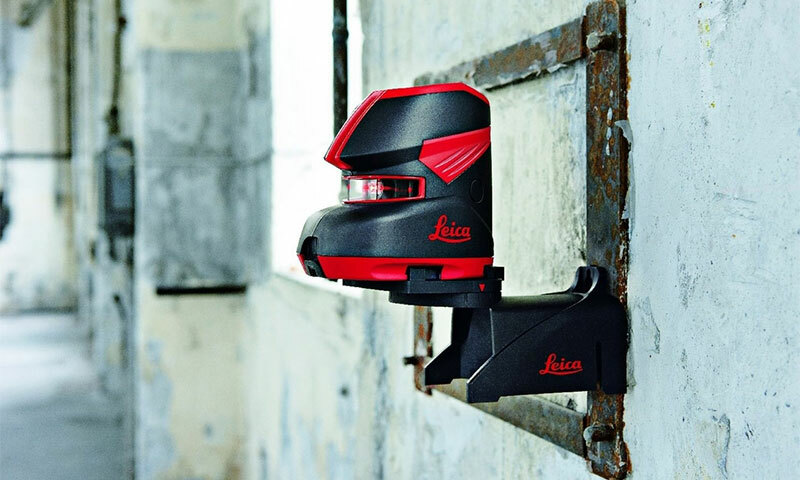
Equilibrium balancing mechanism
In its design, most models use the principle of a freely fixed pendulum( pendulum).When stationary, it is in the case that the instrument is installed strictly horizontally and produces perfectly directed lines. If the level is deflected by a certain number of degrees, the plumb line, whose head interacts with the magnetic field surrounding it, also deflects the current pulse. The stronger the deflection, the more powerful the impulse. A special control system reacts to it and corrects the position of the radiator and optics, returning the beam to the horizontal direction.
Qualitative monitoring systems operate when deviating by tenths of a degree at a distance of 1 m from the instrument. In this case, the deviation of the line at a 10 meter distance does not exceed 1 - 1.5 mm. Before switching on the automation, the unit should be installed horizontally using a bubble level built into the housing. The limit of operation of the automatic system is 3 to 50. If it exceeds the permitted values, a light or sound alarm is activated indicating that human intervention and additional adjustment are necessary.
Some professional models use gyroscopes and a server drive instead of a pendulum system. This is more complicated, but also more precise mechanics, providing a minimum beam deflection at a distance of several hundred meters and reacting to changes in the position of the device in a fraction of a second.
Power and control
Most quality laser levels operate from nickel-cadmium or nickel -metal-hydride batteries, which can be charged from the network. They provide autonomous operation of the device for 8-10 hours with intensive work. Models for household use are equipped with usual replaceable batteries. They are much cheaper and quite suitable for medium power devices without a rotating part.
Management does not require special training or training. Only a few buttons are used - in addition to installing the device on the horizon, no human intervention in its operation is required. If the level is equipped with a rangefinder function, then the display must be located on the case, indicating the distance to the object with an accuracy of fractions of a millimeter.
Many devices are equipped with the auto-off setting button. This is done for the possibility of using the device for the construction of inclined lines, although some models can also notice inclined planes when the horizon is turned on.
The main types of laser levels - what they are
Laser measuring instruments are divided into several types, depending on their capabilities and additional functions. These are:
Laser rangefinders
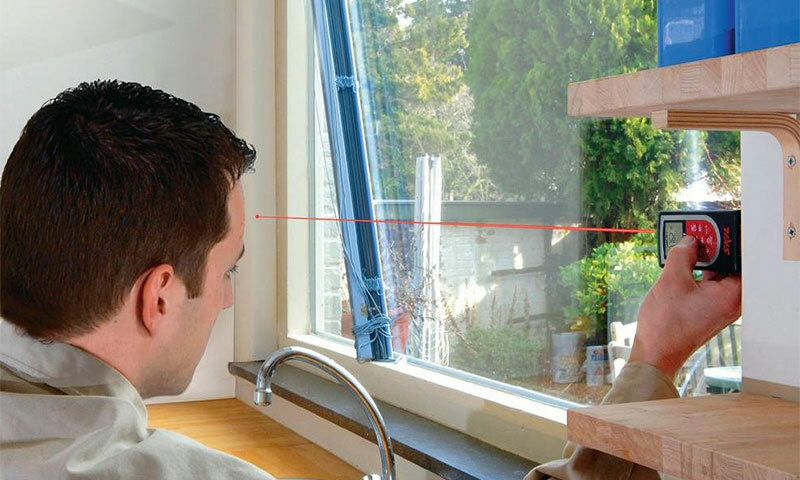
By themselves, the levels are not, but are often installed on professional instruments. Are able to measure the distance to the remote object with the highest accuracy, calculating the transit time of the reflected beam.
Static Axis Builders
Only bright points appear when working on a wall or ceiling. There is no scanning system on them. Can be used to mark the points of the zenith and nadir, the horizon level at long distances.
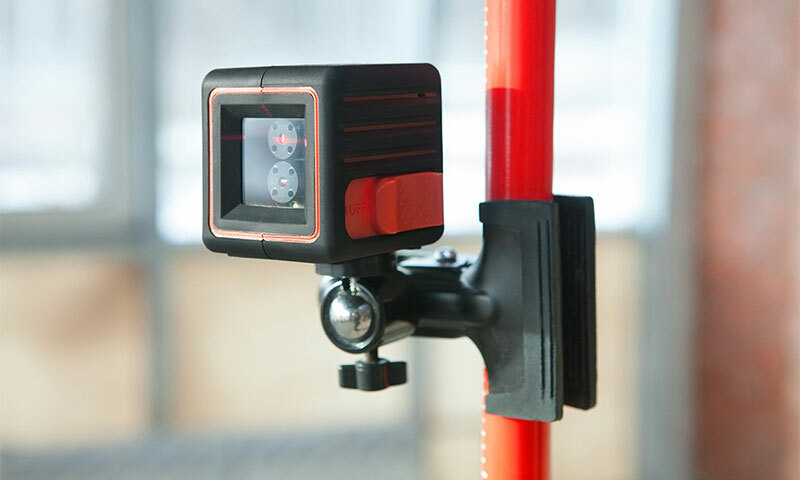
Static line builders
More sophisticated devices that allow you to get intersecting at 90 degrees, horizontal and vertical lines, plumb and zenith with a prism refraction system. Project from two to eight lines at a time.

Rotary
plane builders Equipped with a rotating head, which creates an image of the luminous planes in the horizontal and vertical directions. In terms of functionality, this is the most powerful device used in the professional field. For household use it is too expensive, and most of its capabilities remain unclaimed.
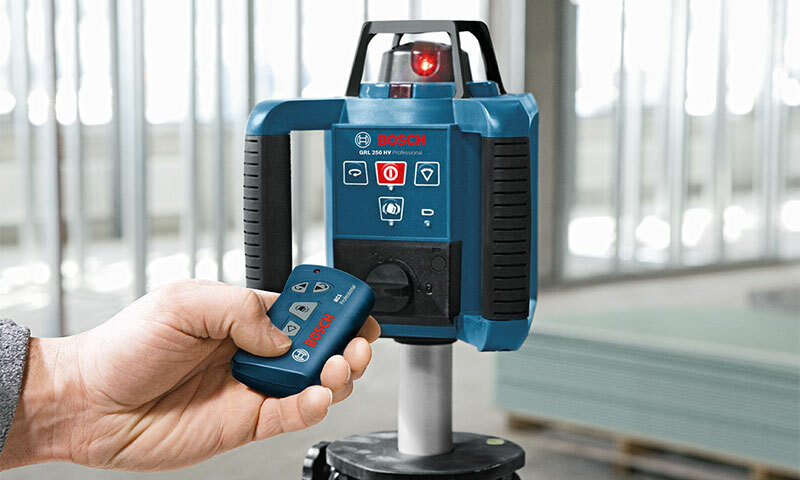
Some professional models are equipped with remote controls, allowing you to work with them from a distance. This function is in demand when marking or checking the quality of work on large objects - stadiums, swimming pools, hangars, production halls. What laser level to choose for building a house is up to you, but you should know in general terms what they are like.
Rating of models for professional and household use
Laser levels produce many famous and completely mysterious companies. The market has more than a hundred models of levels, among which it is very difficult to orient even a professional. If the company produces more than ten models, this does not mean that they are all of high quality and outperform the rest in all respects. To say which laser level is definitely better.
It is also difficult to name individual models that would suit only everyone. But you can select several models that are suitable for home use by domestic craftsmen, as well as for professional work.
Among the static builders you can name:
- X-Line Helper 2D
- BOSCH GLL 2 Professional
- BOSCH GLL 3-80
- Infiniter CL2
- Spectra Precision LG20
- Makita SK102Z.
Spotlight lasers( axle builders) stand out for their qualities:
- STABILA LA-4P
- Bosch GPL5C
- Spectra Precision 5.2XL
- Condtrol XLiner Combo.
The most functional rotary:
- Spectra Precision HV101
- Geo-Fennel FL 260VA
- Bosch GRL 300 HV
- CST / berger ALHV
- Leica Roteo 35G.
They differ in price, availability of some or other additional functions, power of batteries, but the main tasks are performed at the highest level.
The laser level of which firm is better than
But it is best to rely on the manufacturer's authority when choosing a laser level. To date, both for professionals and for home masters the best levels are produced by the German company BOSCH.The line includes more than a dozen models, among which there is always a suitable one for you. BOSCH levels differ not only in functionality, but also in the quality of execution.
Laser devices Geo-Fennel quite able to compete with BOSCH.Although most of the products are manufactured in China, but over it is a complete technical control and the quality they can satisfy the most demanding master. Especially distinguished is the new series of Celection Pro, whose representatives( 5 models) are equipped with lithium-ion batteries of a new type with an accelerated charge cycle.
With the development of more than 20 models, Geo-Fennel engineers have taken into account the requests of both amateurs and professionals, so one of the models is sure to suit. Condtrol devices differ not less than the width of the ruler. This Russian company with production mainly in China produces modern and very reliable levels of a wide range of applications. In addition to high quality, they are attractive at an affordable price.
Matrix, Makita, Kapro and ADA devices are more suitable for household use, but for some works inside the premises are in demand by professionals. ADA products are provided most widely in this segment and among the levels of this company you can find very worthy models that are not inferior in functionality to more famous manufacturers.
The choice of models and companies is not the only correct one, but it is based on the feedback of consumers and is quite true. If you liked the laser level, in the top not included, then this does not mean that it is much better than those named. Simply more suitable for a particular job. Laser levels have a fairly significant margin of universality and they can not be called highly specialized.
Some works are better than static builders, while others are rotational. Choose the model that best suits the intended tasks. For example, without rotary instruments it is very difficult to break down a plot of land, mount engineering systems, perform a number of works on landscape design, lay roads, paths, sidewalks and bridges. Also, rotational levels( axial and planar) are used for marking foundation pits for construction, lay-out of sites, checking the level of erected floors and the correct installation of elements of the roof frame or prefabricated buildings.
Rotational plane builders are still very convenient to use to determine the height differences, the accuracy of mounting inclined elements( very advanced models), geodetic work.
Scope of static builders - interior finishing works, erection of walls and partitions, installation of hinged facades, checking the level of foundations of small buildings, corners, both internal and external. Pointed lasers are used to indicate directions, when installing formwork, scaffolding, transfer of marking from floor to floor. Static levels can be used for work on the landscape, but on a rather limited scale - their range is relatively small and they lose in performance rotational.
How to be guided when choosing a laser level
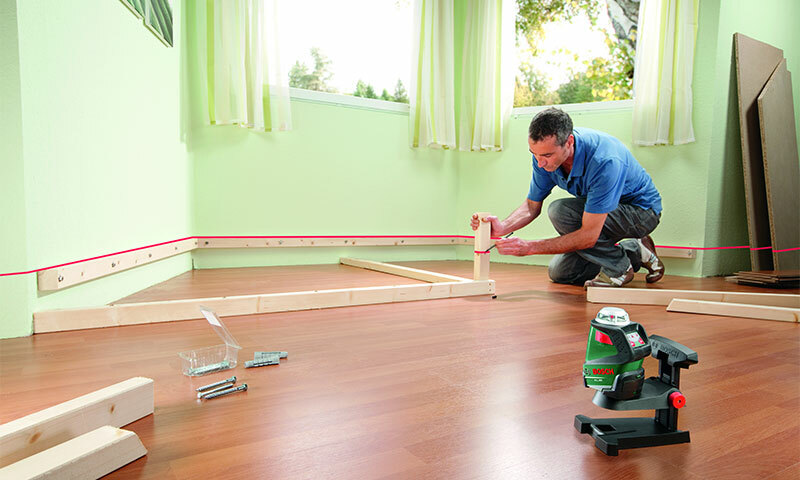
Regardless of the manufacturer and intended use, all levels that are suitable for work must have a number of qualities, without which the instrument from the instrument turns into an expensive toy with a laser beam. Considering how much a laser level costs, this is too expensive.
The cost of laser levels
The price of household and semi-professional laser builders is in the range of 3 - 7 thousand rubles. Given the capabilities of the device, it is completely justified. But professional models are much more expensive, for example, the cost of the Bosch GLL 3-80 P exceeds 30,000 rubles, and the DeWalt DW 089 K and the ADA 6D Servoliner A00139, respectively, 16 and 22 thousand rubles. For periodic use, the most expensive devices should not be bought, but the cheapest ones are unlikely to suit you either. The segment of models at a price of 5 to 7 thousand rubles is suitable for almost any task.
Accuracy of the
This is a very important indicator of the quality of the level. From the level of absolute error depends the final result of any construction process. Acceptable is a deviation of 1-3 mm per 10 meters of the line being beaten. Excellent indicator - 0.5 - 1 mm. They have professional expensive rotational levels. To use the house, enough errors up to 3 mm. With internal work, it is almost invisible, and large-scale construction work at home is quite rare.
Visibility range of the beam
As a rule, even levels of medium quality can work at a distance of 10 - 20 meters without the use of radiation receivers. Of course, it is better if the claimed range reaches 40 meters. Even if you do not have to use the device at this distance, the visibility of the rays in the near, even in bright sunlight will be excellent. When buying a level for professional work, you should choose a device with a range of about 300 meters. If we use the radiation detector, then this index almost doubles.
Laser type
Red and green lasers used in most designs are almost identical in energy and power. But to the human eye the green color is more pleasant and the ray looks brighter. Therefore, professional lasers are equipped with light sources with a wavelength of 532 nm. For the domestic level when working indoors or outdoors, the color of the line does not matter, in an enclosed space it is even more convenient.
The laser class characterizes its power
In building laser levels, lasers of 1 or 2 classes are used. This corresponds to a low-power or medium-power light source, which can slightly damage the eyesight with a direct hit. Long exposure to such a laser beam on the eye is undesirable. The third class of laser is used in long-range levels, for example in geodetic. In construction, they are used for large objects and marking of trails. The beam of such a laser is quite dangerous and requires eye protection when working. Before choosing a laser level, specify the laser class. If it is not specified, do not buy, it is a fake.
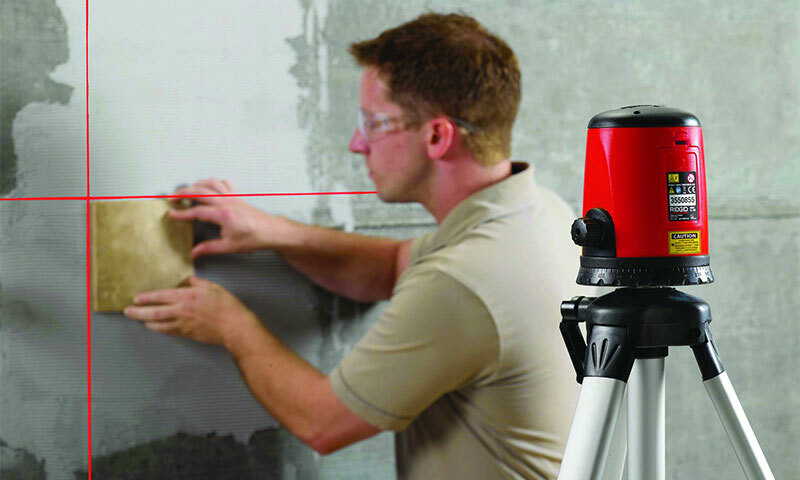
Self-leveling
Automatic horizonting is a very important characteristic that describes the quality of the level. Here, two figures are important - the angle of self-alignment and the time of this process. In most laser levels, self-leveling starts at a deviation of no more than 30. In the best models, it reaches 5 -60.Each degree is a few minutes for manual installation of the device on a bubble level.
If a large amount of work is to be done, the larger the angle of self-leveling, the greater the efficiency from the use of the instrument. Select a laser self-leveling level for the home follows with average performance. Very high speed settings and a large angle are quite expensive.
Stand-alone operation
Defined by the capacity of the battery. For professional devices, it lasts for 30-40 hours of continuous operation. But the price of such devices is even very decent. Most semi-professional tools have batteries or batteries, which are enough for 10 -12 hours. If there is a choice, then it's best to stop on a device with an average battery capacity, but a high charge rate. Rarely when you have to use the level for eight hours in a row. During the break, you can recharge the device and continue working. This is a simple action, but it affects the price of the level significantly.
Protection level
Features of work on the construction site provide not very comfortable conditions. Concerning dust and humidity. Therefore, the laser, pendulum device and electronic circuits should be reliably protected. The casing of all levels is made of strong shockproof plastic. They are airtight and do not allow the ingress of dust or water into the interior. When choosing a level, you should not be tempted by IP65 or IP67 if you are not going to work under heavy rain or during a sandstorm. For the conditions of normal construction, IP54 is quite sufficient. In most cases, it is not only more practical, but also cheaper.
Complete
When buying a laser level, you should consider what additional equipment you need. If a plastic case, eyeglasses and a tripod are needed, then the geodetic rake will only be needed by professionals. To some models, radiation receivers are attached, but this is usually provided for in professional devices. For household levels, they, as necessary, will have to be bought separately.
The charger must be included if the level is running on battery power. Pay attention to the presence of fasteners, which can be attached to the wall, ceiling or magnetic base for installation on metal surfaces. It's very inconvenient to work without them.
Video: how to choose a laser level
Laser levels are very reliable and effective devices that can speed up the construction process, improve the quality of most works and increase the strength of structures due to the correct installation of their elements. The cost of buying a level quickly pays off by increasing the intensity of work.


